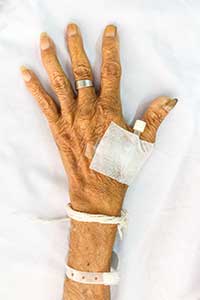Search
Early Identification Of Pressure Sores Can Stop Further Development
 Medical facilities such as hospitals and nursing homes that have bed-ridden patients should be well aware of the early signs of pressure sores. It is a too common problem for them to be unaware of how they form and what to be on the look for. Despite this knowledge, many pressure sores go unnoticed and untreated in their early stages. This lack of attention can cause what was an early stage pressure sore to advance quickly to a more severe and deadly later stage sore.
Medical facilities such as hospitals and nursing homes that have bed-ridden patients should be well aware of the early signs of pressure sores. It is a too common problem for them to be unaware of how they form and what to be on the look for. Despite this knowledge, many pressure sores go unnoticed and untreated in their early stages. This lack of attention can cause what was an early stage pressure sore to advance quickly to a more severe and deadly later stage sore.
Preventive Methods for Reducing Pressure Sores
Preventing pressure sores in the first place is always the best solution. Medical facilities need to keep a close eye on patients that are prone to developing sores. Some patients and risk factors are:
- Elderly patients
- Patients confined to bed or a wheelchair
- Inability to move all or certain areas of the body
- Poor circulation
- Malnourished patients
- Incontinence
Patients with any of these risk factors should be constantly monitored and checked for emerging pressure sores. They also need special care to help prevent the sores from occurring. Caregivers should be using the following methods for prevention.
- Moving the patient. If a patient is unable to adjust their position, it needs to be adjusted for them at least very two hours to prevent prolonged pressure on any one area.
- Keep patient’s skin dry. Moisture can lead to skin breakdown, making it more vulnerable to pressure sores.
- Balanced nutrition. A healthy diet is imperative to healthy skin.
- Use padding and pressure relieving implements. Pillows, foam pads and special mattresses can help cushion and relieve pressure on susceptible areas.
Recognizing The Early Signs of Pressure Sores
Even with preventive methods, pressure sores can often still begin. If medical staff is checking for the early signs, they can begin treatment before the sore progresses to a more serious and painful stage. Patients who are at risk should be checked at least once a day for any visual indications that a pressure sore is starting.
- The skin may appear red, blue or purplish, depending on the normal skin color.
- The skin does not lighten or turn white like normal when you touch or slightly press on it.
- The affected area has a different feel than the skin around it; it may feel softer or firmer, warmer or cooler, it just depends on the patient.
If these pressure sores are found at inception, they can be treated and hopefully stopped before they progress to the point where the skin breaks and the patient is more likely to get an infection. By keeping a close eye on these patients, many of these sores can be prevented from ever happening.
http://www.marshfieldnewsherald.com/article/20120813/MNH04/208130308/Column-Prevent-recognize-pressure-sores-patients?nclick_check=1
 Nursing Home Law News
Nursing Home Law News

